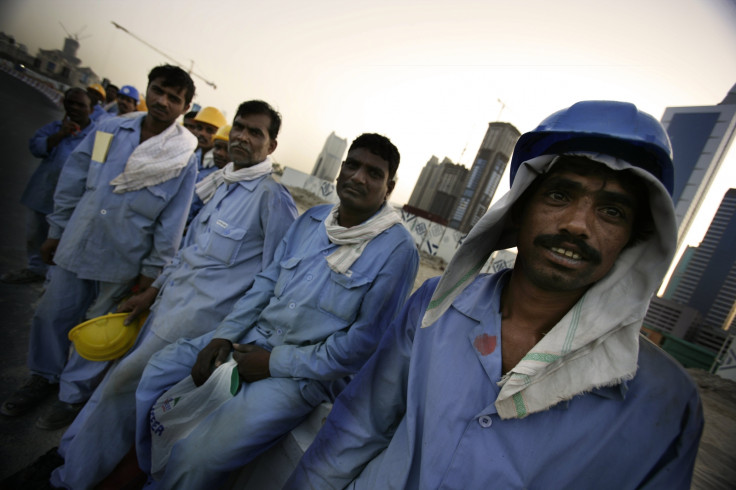International Migrants Day 2014: Five countries with the highest number of immigrants

The number of international migrants worldwide has soared since 1990, as more and more people are leaving their country of origin.
On International Migrants Day, observed by the United Nations, there are now 230 million international migrants in the world - amounting to approximately 3.25% of the global population. Approximately half of all migrants reside in 10 countries, including the United States, most of which boast developed, high-income economies with good employment prospects.
Reasons for emigration vary hugely, from migrants in search of a better life or economic prosperity, to those escaping conflict, famine or poverty. Others are drawn to the better education systems of more affluent countries, or the cultural freedom of their destination.
IBTimes UK looks at five countries with the highest number of immigrants.
United Arab Emirates
There are 7.8 million immigrants in UAE, which has a higher proportion of immigrants than any other country in the world. Migrants in UAE predominantly come from Asian nations, attracted to the economic prosperity the oil-rich state has to offer.
However, a recent Human Rights Watch report revealed how the UAE's "kafala" visa-sponsorship system ties foreign workers to individual employers, exposing migrants to greater abuse and exploitation. According to the report, UAE's denial of labour law protections leaves migrant domestic workers vulnerable to rights violations.
Domestic workers have reported being beaten, sexually assaulted, denied food and in some cases, trafficked into forced labour.

Saudi Arabia
Approximately one third of Saudi Arabia's population is made up of immigrants. As of 2013, there were around 9.1 million immigrants living in the country.
As with other Gulf states, immigrant labour is managed through the kafala system, leaving migrants open to exploitation. According to human rights organisation, Saudi Arabia has a rampant black market aimed at circumventing the system.
In recent years, the Saudi government has attempted to reduce the influx of migrants into the country, capping the amount of foreign workers at 20% and deporting thousands of migrants from Ethiopia.
Germany
There are 9.8 million immigrants living in Germany. The country's political landscape is undergoing a transformation, with thousands of German residents campaigning against the influx of immigration.
The majority of Germany's migrants come from Eastern Europe, but also from other states in the southern eurozone, attracted to Germany's stronger economy and jobs market. As Germany has a significant skills gap and a particularly low birth rate, migrant workers are being welcomed. Refugees have also fled there from conflict in the Middle East.
As a response to immigration in the country, rallies have spread across Germany since a local social media appeal in Dresden two months ago. It threatens to unsettle the German political establishment, which has worked hard to restore Germany's image as a tolerant state after the devastation of the Nazis.

Russia
Russia has around 11 million immigrants. After a decrease in population in the mid-1990s, following the dissolution of the USSR, the Russian government made it easier to immigrate to the country to attract migrants from former Soviet states.
There has been a large flow of immigrants from former Soviet Union nations to Russia for the last two decades. Although Russia's economy has risen and fallen throughout this time, an ageing population and high mortality rates have kept the demand for labour steady – and occasionally growing – in some cities.
Migrants from neighbouring states, such as Kazakhstan, are able to earn higher wages than in their home countries – although working conditions for migrants in Russia remain hard.
United States
With over 45 million immigrants, "the land of opportunity" has by far the highest number of migrants in the world. The US has the largest national economy in the world, high education and social mobility, drawing migrants to a potentially better life.
It hosts around 20% of the world's migrants and the influx is a complex demographic phenomenon that has been a major source of population growth and cultural change in the country.
Family reunification accounts for around two-thirds of legal immigration to the US every year. The US accepts far more international migrants than any other nation in the world, despite various state policies to reduce immigration.
© Copyright IBTimes 2025. All rights reserved.




















